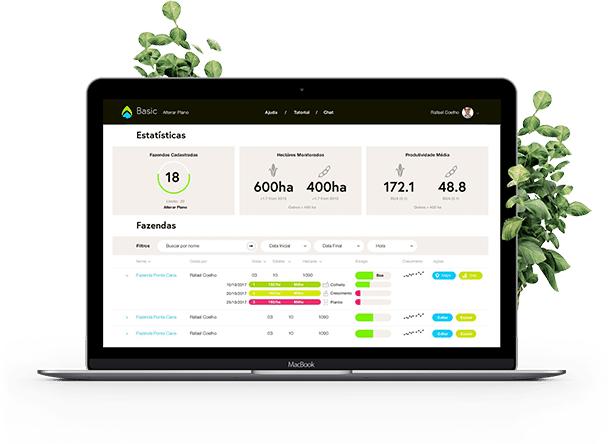
Photo courtesy of Agronow
Agronow is spearheading a new revolution it calls Agriculture 5.0, through which it aims to monitor crops by using artificial intelligence, making it possible for all sectors involved in agribusiness — banks, tradings, lenders and insurers — to receive alerts, information, analyses and projections that are fundamental for remotely strategic decision-making.
Using satellite imagery to monitor rural properties around the world, Agronow places all of the information on a farm’s productivity onto a unique platform, with climate and marketing information, harvest alerts, drops in production, product quality and other variables of interest, and it also projects future harvests with a high degree of certainty.
“Agronow is developing a technology that uses neural networks to determine what a crop is without having a manual input. This will allow the company to make correct estimates not only about yields, but also about the total agricultural production of a region or country,” said Agronow CEO Rafael Coelho. “So, we will be able to deliver completely new market intelligence with a detailed vision of how to expand the agricultural frontier and of changes in weekly production.”
Coelho explained that Agronow’s analysis allows the most productive areas with the greatest business potential to be identified.
“Companies will be able to decrease risks and to have more knowledge about areas that are unknown or that do not have good information,” he said. “Not having reliable information causes them to adjust prices in order to mitigate their product risk. With the use of our platform, over the long term, it is expected that there will be a reduction in the products and services prices — such as lending and insurance — allowing a better cost structure for rural producers and, consequently, improved food production.”
The tool has its own algorithm, with radiometric and thermodynamic parameters to determine a crop’s yield potential. Headquartered in Brazil, Agronow has already processed more than 2 billion acres.
This was originally published at Via Satellite.